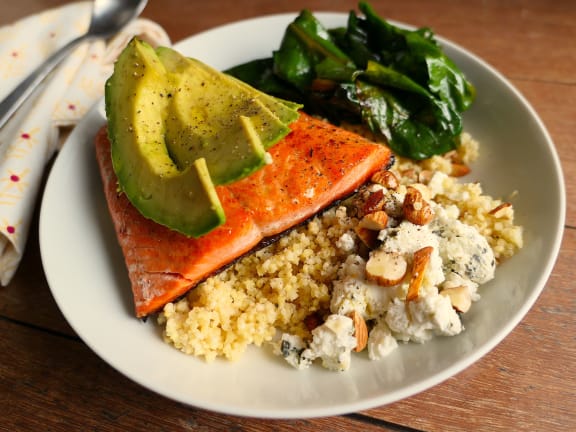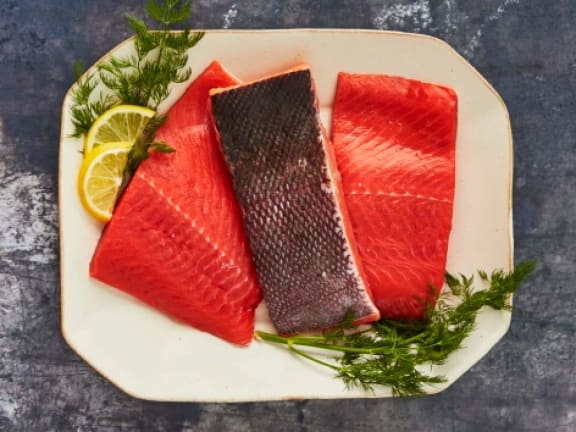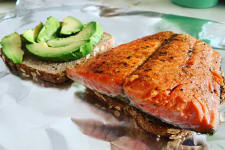Omega-3 fatty acids are a key nutrient for overall health, but in honor of Mother’s Day, we’d like to highlight the ways that omega-3s can support mothers through all stages of motherhood — from preconception, to pregnancy, to the postnatal months, and even in nourishing our children through adolescence.
A Little Background on Omega-3 Fatty Acids
Research shows that the typical American diet is deficient in omega-3s, and is instead overladen with omega-6 fatty acids, found in vegetable oils, meats, and processed foods. Consuming a diet with this imbalance of fats — too many omega-6s and too little omega-3s — is associated with an increased risk of chronic illness.
One of the reasons these healthy fats are lacking in the average American diet is because they’re only found in a handful of foods — predominantly wild-caught seafood. And while many people consume seafood, we don’t always do so on a regular basis.
Fish is also the highest source of the two most recommended forms of omega-3s: EPA and DHA. Plant-based sources, such as walnuts or hemp seeds, only provide ALA, which is converted to EPA and DHA after eating, but at much lower rates. That’s why seafood is such a critical source of omega-3s.
It is also important to mention the difference in health potential between farmed fish and wild-caught fish. Farming a species of fish can drastically impact its fat profile, shifting its nutritional balance toward more omega-6 fatty acids instead of the omega-3s you would expect in wild species. Farmed fish can also contain a high amount of contaminants that are not found in their wild counterparts.
Omega-3s and Preconception
When preparing the body for pregnancy, healthy fats are critical for hormone production and healthy fertility. One study showed that women taking omega-3 supplements had an increased probability of conception. This is potentially due to the importance of omega-3s for synthesis of estrogen and for its impact on the stimulation of ovulation. This might be an especially important point to consider in those who are looking to optimize their odds of conceiving.

What to cook: This 5-minute recipe for Smoked Salmon Toast with Avocado and Feta is a great way to get a dose of healthy fats every day.
Omega-3s and Pregnancy
During pregnancy, there’s strong research that shows the benefit of omega-3s, specifically DHA and EPA. This is because omega-3s play an important role in the development of the baby's brain and neurological system, and may even impact length of gestation and prevent preterm labor. Consumption of omega-3s during pregnancy has also been shown to support childhood brain development and help prevent asthma and allergy development. Folate, iron, and many other nutrients are also critical during this stage of motherhood.
Eating seafood is an important part of a pregnant woman’s diet and should be included about three times per week. However, be wary of some of the larger fish on the food chain, like tuna, shark, swordfish, and king mackerel, which are higher in mercury and should be avoided especially during pregnancy.

What to cook: Combine a variety of nutrient-rich components to make this recipe for a Mix-and-Match Nurturer Bowl with Wild Salmon.
Omega-3s, Postnatal, and Breastfeeding
Omega-3-rich seafood is a healthy addition to a postnatal diet supporting both mom and baby. If mom is breastfeeding, keeping adequate omega-3-status will also benefit baby’s development.
After a baby is born, omega-3 content is still important to include in the diet. It helps support the baby’s needs as rapid growth and development are taking place, which is why many formulas contain it. Not only does the baby benefit from omega-3s after birth, but one study showed that low omega-3 intake postpartum was associated with postpartum depression. When adequate levels of omega-3 were consumed during pregnancy, levels of postpartum depression improved.

What to cook: For a mood-lifting meal, make this recipe for a Brain Health Bowl with Pineapple Teriyaki Salmon.
Omega-3s During Childhood and Adolescence
Because fish is one of the best sources of omega-3 fatty acids, specifically the EPA and DHA forms, it should be considered for all stages of the life cycle. As children grow, and become more and more independent, the role of nutrition continues.
Sufficient consumption of omega-3s is important throughout childhood and adolescence. Adequate status of omega-3s has been shown to help improve mood in childhood, and reduce the risk of Autism Spectrum Disorder and ADHD. Omega-3s can also help protect against allergies and asthma, and are a key factor in building a healthy immune system in children of all ages. Finding fun and unique ways to incorporate omega-3-rich seafood into weeknight recipes will encourage the whole family to enjoy these meals together.

What to cook: Try flaking a couple fillets of salmon into this 10-minute recipe for Spiced Salmon Tacos.
About Brooke Scheller, DCN, CNS:
Dr. Brooke Scheller is a Doctor of Clinical Nutrition and Board Certified Nutrition Specialist. She specializes in functional nutrition to support gut health, mood and mental health, and alcohol use. Dr. Brooke has over 12 years of training and experience in nutrition and functional medicine and has worked with both individuals and large organizations building nutrition programs to scale. She is also the founder of Condition Nutrition, a nutrition consultancy working with start up organizations in personalized nutrition, supplements, and health-tech.
Wild Alaskan Company delivers wild-caught, sustainable seafood directly to your door. Get Started.






